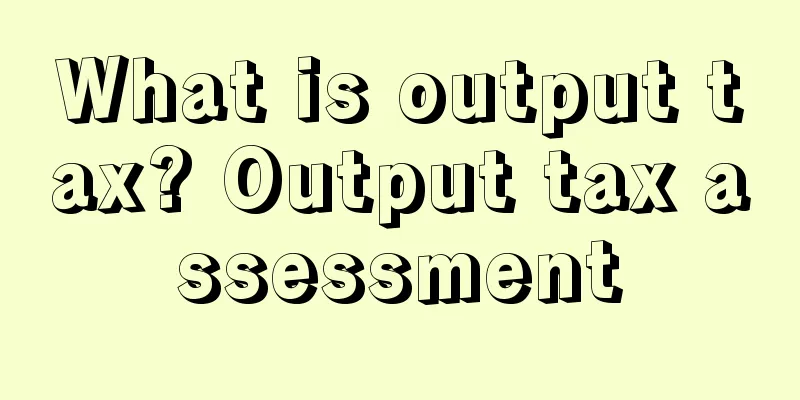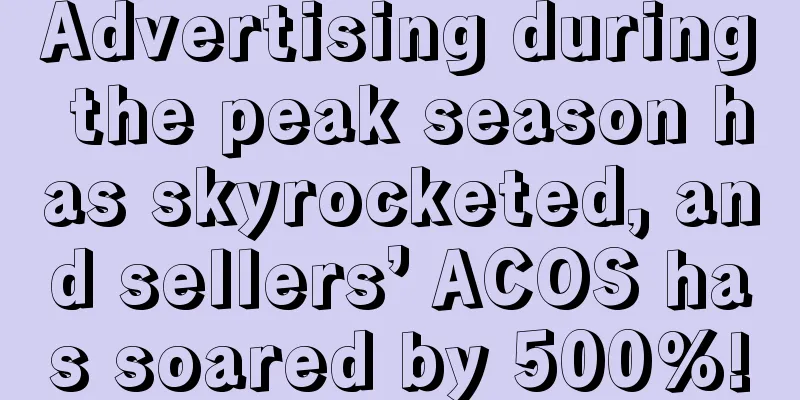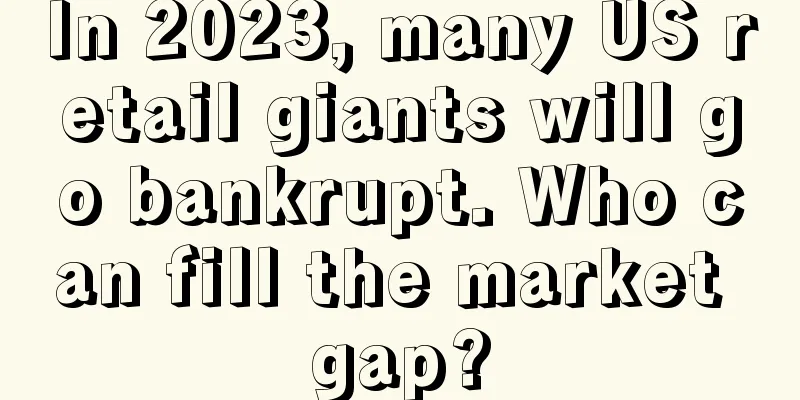What is output tax? Output tax assessment

|
Output VAT refers to the VAT amount that a VAT taxpayer collects from the purchaser based on sales and applicable tax rates when selling goods, processing, repair, and maintenance services, services, intangible assets, or real estate. It is a part of the financial process. Output VAT can be calculated in two ways: inclusive and exclusive of tax. Foreign name: output VAT Formula: current sales amount × applicable tax rate Classification: inclusive, exclusive of tax Affiliation: finance, taxation Definition: VAT amount 1. Calculation method Output tax calculation formula Current sales tax = current sales × applicable tax rate For example: A steel company sells a batch of steel to a machinery company. The ex-factory price is RMB 10 million (excluding tax). The applicable VAT rate is 16%. The output tax that the steel company should collect from the machinery company is calculated as follows: Output tax = 10 million yuan × 16% = 1.6 million yuan In addition, because the sales volume in the calculation of output tax includes both sales volume excluding tax and sales volume including tax, it is divided into the following two situations: Output tax = sales amount (excluding tax) × tax rate Output tax = (tax-inclusive) sales / (1 + tax rate) × tax rate 2. Determination of Amount Calculation of sales in general The current sales volume includes all the prices and additional fees that the VAT taxpayer receives from the purchaser for the goods and taxable services sold during the current period. Specifically, the taxable sales volume includes the following: (1) The total price of goods sold or taxable services provided is received from the purchaser. (2) Various extra-price charges charged to the purchaser. Specifically including: handling fees, subsidies, funds, fund-raising fees, profit rebates, incentive fees, liquidated damages, delayed payment interest, packaging fees, packaging rentals, storage fees, quality fees, transportation and loading and unloading fees, collection and advance payments, etc., unless otherwise provided by the State). However, the following items are not included: 1. Consumption tax collected and paid on behalf of the processing company for consumer goods subject to consumption tax. 2. Advance payment of transportation expenses that meets the following conditions: (1) The transportation fee invoice issued by the carrier to the purchaser; (2) The taxpayer transfers the invoice to the purchaser. 3. Government funds or administrative fees collected on behalf of others that meet the following conditions: (1) Government funds approved by the State Council or the Ministry of Finance, and administrative fees approved by the State Council or provincial people's governments and their finance and price authorities; (2) When collecting the money, a fiscal receipt printed by a provincial-level or higher-level fiscal department shall be issued; (3) All funds collected shall be turned over to the finance department in full. 4. Insurance premiums charged to the purchaser for insurance purposes while selling goods, as well as vehicle purchase taxes and vehicle license fees collected from the purchaser on behalf of the purchaser. Sales volume under discount Discount sales refer to the situation where the seller gives the buyer a discount on the price when selling goods or taxable services due to the buyer's large purchase quantity (e.g., 10% discount on the sales price for 5 items, 20% discount on 10 items, etc.). According to tax law, after the taxpayer sells goods and issues a special VAT invoice to the buyer, if the seller gives the buyer a corresponding discount or rebate due to the buyer's cumulative purchase of goods reaching a certain quantity within a certain period of time, or due to market price declines, the seller may issue a red-ink special VAT invoice in accordance with the relevant provisions of the current "Regulations on the Use of Special VAT Invoices". (See relevant content in Section 11) A few explanations are needed here: First, discount sales are different from sales discounts. Sales discounts refer to a discount that the seller promises to the buyer after selling goods or taxable services in order to encourage the buyer to repay the payment early (such as: 2% discount for payment within 10 days; 1% discount for payment within 20 days; full price payment within 30 days). Sales discounts occur after the sale of goods and are a kind of financing cost. Therefore, sales discounts cannot be deducted from sales. When determining sales, enterprises should strictly distinguish between discount sales and sales discounts. In addition, sales discounts are different from sales allowances. Sales allowances refer to a price discount that the seller must give to the buyer after the goods are sold because the buyer does not return the goods due to reasons such as variety and quality. Compared with sales allowances, although both occur after the goods are sold, because sales allowances are caused by the reduction in sales due to the variety and quality of the goods, the sales amount after the sales allowance can be the sales amount. Second, discount sales are limited to discounts on the price of goods. If the seller uses self-produced, commissioned, and purchased goods for discounts in kind, the amount of the kind cannot be deducted from the sales of the goods, and the kind should be subject to value-added tax in accordance with the "deemed sale of goods" in the Value-Added Tax Regulations as "gift to others." Article 2, Item (2) of the Notice of the State Administration of Taxation on Issuing the Provisions on Certain Specific Issues of Value-Added Tax (State Administration of Taxation [1993] No. 154) provides: "If a taxpayer sells goods at a discount, and the sales amount and the discount amount are separately indicated on the same invoice, value-added tax may be levied on the sales amount after the discount." If a taxpayer sells goods at a discount, and the sales amount and the discount amount are separately indicated on the same invoice, it means that the sales amount and the discount amount are separately indicated in the "Amount" column of the same invoice, and value-added tax may be levied on the sales amount after the discount. If the discount amount is not indicated in the "Amount" column of the same invoice, and only the discount amount is indicated in the "Remarks" column of the invoice, the discount amount shall not be deducted from the sales amount. Taxpayers should calculate the current output tax based on the current sales volume and collect it at the same time as collecting payment for goods and service income from the purchaser. When a taxpayer sells goods and taxable services and adopts the method of combining sales and output tax, the sales excluding VAT shall be calculated according to the following formula: Sales excluding VAT = Sales including VAT / (1 + applicable VAT rate) For example, the book sales revenue of a bookstore this month is 1.13 million yuan (including VAT), and the applicable VAT rate is 13%. The calculation method of the bookstore's tax-free sales and output tax is: Sales amount excluding tax = 1.13 million yuan / (1 + 13%) = 1 million yuan Output tax = 1 million yuan × 13% = 130,000 yuan 3. Tax Amount Check 1. Sales Check ⒈ Inspection of sales excluding tax. The sales amount for calculating output tax is the sales amount excluding value-added tax. If the taxpayer's sales amount is a mixed collection of price and tax, the sales amount including tax shall be converted into the sales amount excluding tax. The calculation formula is: Sales = Sales including tax / (1 + tax rate) ⒉ Inspection of extra-price expenses. Extra-price expenses refer to the fees, subsidies, funds, fund-raising fees, profit return, reward fees, liquidated damages (interest on deferred payment), packaging fees, packaging rentals, reserve fees, quality fees, transportation and loading and unloading fees, or extra-price expenses charged to the purchaser for providing taxable services. Regardless of how the accounting system is used, they should be included in the sales amount to calculate the taxable amount. According to the accounting system, since extra-price expenses are generally not accounted for in the "product sales income" or "commodity sales income" accounts, but in the "other payables", "other business income", "non-operating income" and other accounts, enterprises often fail to calculate the output tax amount for extra-price expenses, and some enterprises even directly reduce the extra-price expenses from the relevant expense accounts. Therefore, the inspection of extra-price expenses is an important part of the inspection of output tax amount. The inspection of out-of-price costs should mainly focus on the following aspects: ⑴ Understand the situation. Learn about the sales situation and settlement form from the sales department, analyze whether there is a possibility of charging additional fees through product sales market, and understand whether the industry management department requires the collection of additional fees. ⑵ Check the current accounts. Focus on the "other receivables" and "other payables" accounts. Check whether there are outstanding debts, especially through the debit amount of the "other payables" account or the credit amount of the "other receivables" account, to see whether the corresponding account is related to the inflow of monetary funds or the debit increase of the "accounts receivable" account. That is: Debit: Bank deposits (accounts receivable) Credit: Other payables (other receivables) If the above correspondence occurs, it is necessary to further prove whether it is an additional charge and whether it is taxable through original documents such as invoices and receipts. ⑶ Check the accounting of cost and expense accounts. Pay attention to the red words registered in cost and expense accounts, and review the red-word offset records of debit amounts in accounts such as "administrative expenses", "financial expenses", "production costs", "manufacturing expenses", "other business expenses", "non-operating expenses", and "operating expenses". [Example] During the inspection of a certain enterprise (general taxpayer), the inspectors found that the enterprise charged the buyer RMB 11,700 in interest on deferred payment when collecting payment for goods. The enterprise's accounting treatment is: Debit: Bank deposit 11700 Credit: Financial expenses 11700 According to the relevant provisions of the "Provisional Regulations on Value Added Tax", interest on deferred payment is an additional charge and the output tax should be calculated. Debit: Financial expenses 11700 Credit: Product sales income (main business income) 10000 Taxes payable - VAT payable (output tax) 1700 ⑷ Check the "other business income" and "non-operating income" accounts. According to the provisions of the total system, some extra-price expenses can be recorded in such accounts. Therefore, when checking, it is necessary to analyze the source and attributes of the income, whether it is interest subsidies and other extra-price expenses collected from the sale of goods, and whether the output tax is correctly calculated. 3. Inspection of mixed sales. A sales act is considered mixed sales if it involves both goods and non-taxable services. There are two criteria for mixed sales: ⑴ The sales behavior must be one; ⑵ The behavior must involve both goods and non-taxable services. For enterprises, corporate units and individual operators engaged in the production, wholesale or retail of goods, including enterprises, corporate units and individual operators engaged in the production, wholesale or retail of goods and concurrently engaged in non-taxable services, mixed sales (i.e., the total of the taxpayer's annual goods sales and non-VAT taxable service turnover, the annual goods sales exceed 50%) are regarded as sales of goods and should be subject to VAT, and their sales are the total of the sales of goods and non-taxable services. During the inspection, first, we need to determine whether the sales revenue of the inspected object belongs to mixed sales according to the standards; second, we need to determine whether the revenue from mixed sales is subject to value-added tax; and third, we need to determine whether the output tax is calculated correctly. Note that the sales of non-taxable services in mixed sales should be converted into sales excluding tax to calculate the output tax. [Example] A TV factory wholesales 100 TV sets to a shopping mall in another city. In order to ensure timely delivery, the two parties agree that the factory will be responsible for transportation. The sales price of each TV set is 3,000 yuan excluding tax, and the total freight is 10,000 yuan. The factory's accounting treatment is: Debit: Bank deposit 361000 Credit: Main business income 300000 Taxes payable - VAT payable (output tax) 51000 Other business income 10000 The TV factory's sales of TVs and the agency's transportation and freight collection are mixed sales, which should be included in the sales amount and subject to VAT. The output tax is 49,379 yuan [300,000 × 16% + 10,000/(1 + 16%) × 16%], and the VAT payable on freight income is 1,379 yuan. The correct account adjustment is: Debit: Other business income 1379 Credit: Taxes payable - Value-added tax payable (output tax) 1379 ⒋ Inspection of concurrent sales. Different from mixed sales, concurrent non-taxable services refer to the situation where a VAT taxpayer engages in non-taxable services while selling taxable goods or providing taxable services, and the non-taxable services engaged in have no direct connection or subordinate relationship with a certain sale of goods or provision of taxable services. According to the provisions of the "Detailed Rules for the Implementation of the Provisional Regulations on Value-Added Tax", if a taxpayer engages in concurrent non-taxable services, he shall separately account for the sales of goods or taxable services and non-taxable services, and impose VAT on the sales of goods and taxable services at their respective applicable tax rates, and impose business tax on the sales of non-taxable services at the applicable tax rate. If the sales of goods or taxable services and non-taxable services are not separately accounted for or cannot be accurately accounted for, the non-taxable services shall be subject to VAT together with the goods or taxable services. During the inspection, attention shall be paid to whether the enterprise has concurrent sales, whether it has made separate accounting, and if it has not made separate accounting, whether it has paid VAT together. Second tax rate inspection There are two VAT rates: a basic rate and a low rate. In addition, a zero rate is designed for export goods. ⒈ Basic tax rate. The basic tax rate is 16%. If a taxpayer sells or imports goods and provides processing, repair and maintenance services, the tax rate is 16%. ⒉ Low tax rate. The low tax rate is 13%. Taxpayers who sell or import the following goods shall pay the low tax rate: Value added tax is levied. ⑴ Food and edible vegetable oil: In order to take care of the people's daily necessities, these goods are taxed at a low level. ⑵Tap water, heating, air conditioning, hot water, coal gas, liquefied petroleum gas, natural gas, biogas, and coal products for residents. ⑶ Books, newspapers, and magazines. These are mainly to support publicity, culture, and education. ⑷ Beverages, fertilizers, pesticides, agricultural machinery, and agricultural films. This is mainly to take care of farmers and support the development of agricultural production. 5. Agricultural products: Packaging of primary products of various plants and animals produced by planting, breeding, forestry, animal husbandry and aquaculture. (6) Metal mining and dressing products. Including non-metal mining and dressing products and coal other than metal mining and dressing products. ⑺ Non-metallic mineral mining and dressing products. Including non-metallic mineral mining and dressing products other than metallic mineral mining and dressing products and coal. ⒊ Zero tax rate. Only limited to export goods. Export goods include two categories: one is the goods declared for export; the other is bonded factories, bonded warehouses and bonded areas. However, for crude oil exported by taxpayers, foreign aid export goods, goods prohibited from export by the state, including natural bezoar, musk, platinum, etc., value-added tax should be levied according to regulations. ⒋Other provisions on tax rates ⑴ For taxpayers who engage in goods or taxable services with different tax rates, the sales of goods or taxable services with different tax rates should be calculated separately. If the sales are not calculated separately or the sales cannot be accurately provided, the higher applicable tax rate shall be used for tax collection at a rate of 16%. (2) A sales act that involves both goods and non-VAT taxable services is a mixed sales act. The mixed sales of enterprises, corporate units and individual operators engaged in the production, wholesale or retail of goods, as well as enterprises, corporate units and individual operators engaged in the production, wholesale or retail of goods as the main (i.e., the total of the taxpayer's annual goods sales and non-taxable service turnover, the annual goods sales exceed 50%, and the non-taxable service turnover is less than 50%), and non-taxable services are also engaged in non-taxable services. The mixed sales of other units and individuals are regarded as sales of non-taxable services and are not subject to VAT. ⑶ Taxpayers who engage in goods or taxable services with different tax rates shall account for the sales of goods or taxable services with different tax rates separately. If the sales are not accounted for separately, the higher tax rate shall be applied. During the inspection, the above applicable tax rates shall be used for verification and adjustment according to the provisions on the corresponding applicable tax rates for different taxable items. References |
>>: What is Shopee? Shopee Review
Recommend
"Minzhi's Grudges" of Cross-border E-commerce Partners (full text): After experiencing the love-hate relationship, various pitfalls and heartbreaks of starting Amazon in partnership with a good friend, what kind of partner should I look for?
Excerpt: …Around May 22, the operator called me an...
What is Adsmarch? Adsmarch Review
Adsmarch was founded in 2017 and is a startup comp...
What is Goodthings.com? Goodthings.com Review
Goodies.com is a major cross-border e-commerce sup...
Sellers' costs are reduced! Amazon announces a trial of new policies
Normal, once there is data abnormality, such as s...
What is Lightning Technology? Lightning Technology Review
Qinglei Technology is the most professional cross-...
Amazon no longer offers free shipping for Prime members
Recently, Amazon sent a group email to inform all...
What is Jinqiao Textile Network? Jinqiao Textile Network Review
Qingdao Xinjinqiao E-commerce Co., Ltd. was establ...
148 million Americans plan to shop on Super Saturday! These categories are the most popular
According to an annual survey recently released by...
Amazon internal employees plead guilty! Selling gray industry services to make millions of dollars
Amazon has made a big news in the past two days. T...
The top ten most popular retailers in the US back-to-school season are announced! Amazon ranks third!
<span data-docs-delta="[[20,"获悉,根据JLL(仲量联行...
With traffic declining and sales sluggish, Amazon’s advertising fees in the United States soared by more than 50%!
It is learned that recently an EU privacy regulato...
Shocking inside story! The truth behind the bankruptcy of the former cross-border leader is exposed? Is there endless internal fighting?
Shenzhen Global Easybuy, a long-standing cross-bo...
Third-party sellers account for 60% of sales! Amazon's official peak season summary is here
Last weekend, Amazon released an overall summary r...
What is Captain Amazon? Captain Amazon Review
Amazon Captain is a SAAS-based Amazon seller opera...
Etsy partners with Google to help sellers expand their audience
<span data-docs-delta="[[20,"获悉,近日Etsy发布公告...









